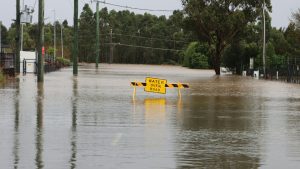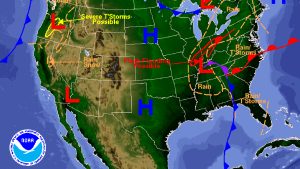Thunderstorms are one of nature’s most dramatic weather phenomena, delivering powerful lightning, heavy rain, and sometimes hail or tornadoes. But how do these storms form, and what atmospheric ingredients are necessary for them to develop? This guide breaks down the formation of thunderstorms in simple terms for curious minds.
What Is a Thunderstorm?
A thunderstorm is a weather system characterized by the presence of lightning and thunder. It often includes heavy rain, gusty winds, and sometimes hail. Thunderstorms can range in size from a small, localized storm to massive systems covering hundreds of miles.
The Ingredients for Thunderstorm Formation
For a thunderstorm to develop, three key atmospheric ingredients must be present:
- Moisture
Moisture in the lower atmosphere (usually from evaporation) provides the fuel for cloud formation and precipitation. - Unstable Air
Warm air near the surface needs to rise rapidly through cooler air aloft. This creates instability in the atmosphere. - Lifting Mechanism
Something must push the warm, moist air upwards. Common lifting mechanisms include cold fronts, mountains, and intense surface heating.
The Three Stages of a Thunderstorm
1. Cumulus Stage
Warm, moist air rises and condenses into cumulus clouds. This stage is dominated by updrafts, and no precipitation falls yet.
2. Mature Stage
The storm becomes fully developed. Heavy rain begins to fall, lightning and thunder occur, and both updrafts and downdrafts are present. This is the most intense phase of the thunderstorm.
3. Dissipating Stage
The downdrafts overcome the updrafts, cutting off the storm’s fuel supply. Rain tapers off, and the storm weakens.
Types of Thunderstorms
- Single-cell Thunderstorms: Small and short-lived.
- Multi-cell Thunderstorms: Groups of cells at different stages of development.
- Supercells: Rotating thunderstorms capable of producing severe weather, including tornadoes.
Safety Tips During Thunderstorms
- Stay indoors and avoid windows.
- Do not use electrical appliances.
- Avoid open fields and tall isolated objects.
- Wait at least 30 minutes after the last thunderclap before going outside.
Conclusion
Thunderstorms are complex yet fascinating weather events. By understanding how they form and evolve, we gain a deeper appreciation of the forces of nature — and how to stay safe when they occur.




